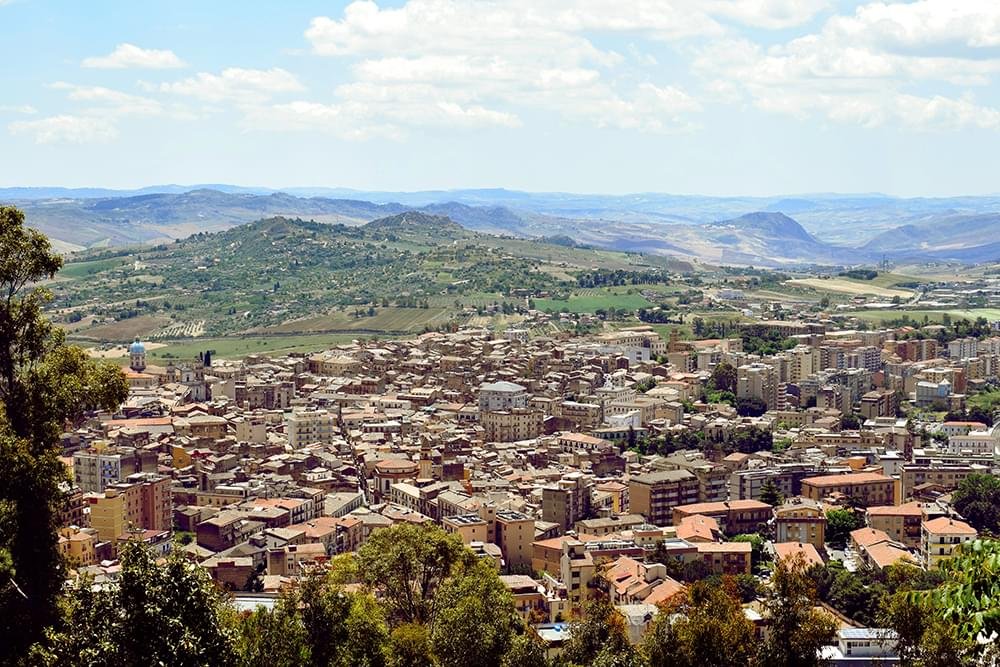
Located in the heart of Sicily, the province of Caltanissetta is often overlooked by mainstream tourism, yet it offers a rich combination of history, nature, and cultural heritage. The landscape ranges from rolling hills and wheat fields to forested mountains and ancient ruins.
Its central location makes it a perfect starting point to explore the soul of Sicily. The region’s traditions, archaeological treasures, and authentic rural life are preserved in a way that’s rare in more popular parts of the island.

The history of Caltanissetta province dates back thousands of years. Long before the Romans and Arabs arrived, the Sicani and Sicels—indigenous peoples of Sicily—inhabited this region. Traces of their settlements remain scattered across the countryside.
Later, the Greeks and Romans left their mark in sites like the ruins of Sabucina, an ancient city that once overlooked a key trade route. Excavations have revealed homes, tombs, and artifacts that offer insight into a layered and fascinating past.
One of the province’s most striking features is its natural environment. Monte Cammarata, located near the border with Agrigento province, is part of the Monti Sicani mountain range and offers spectacular hiking, views, and biodiversity.
The mountain is included in a regional nature reserve where visitors can explore chestnut forests, limestone peaks, and trails leading to centuries-old shepherd villages. Wild orchids, eagles, and porcupines are just a few of the region’s native species.
The heart of the province is its small villages, where time seems to stand still. Towns like Mussomeli, Marianopoli, and Sutera reflect the island’s medieval, Norman, and Arab influences in their architecture, layout, and cultural practices.
Sutera, in particular, has gained fame as one of Italy’s “Borghi più belli,” or most beautiful villages. With its winding streets, hilltop views, and ancient monasteries, it provides a glimpse into traditional Sicilian life, untouched by mass tourism.
Among the most impressive landmarks in the province is Castello Manfredonico in Mussomeli. Perched dramatically on a rocky outcrop, this 14th-century fortress was once a military stronghold and a noble residence.
The castle’s thick walls, towers, and chambers still exude a medieval atmosphere. Local legends speak of haunted rooms and hidden treasures, adding mystery to its already captivating presence. Visitors can enjoy panoramic views from its battlements.
Once the center of Sicily’s sulfur industry, Caltanissetta province played a vital role in global mining during the 19th and early 20th centuries. At its peak, the region supplied much of the world’s sulfur for gunpowder, matches, and chemicals.
Today, the Rosso di San Giuliano and Trabonella mining complexes serve as open-air museums. These sites educate visitors on the harsh working conditions and the economic importance of this now-vanished industry that shaped the province’s identity.
The province of Caltanissetta is deeply spiritual, with religious festivals that mark the calendar year. The Holy Week processions in Caltanissetta and Delia are particularly moving, featuring lifelike statues, elaborate floats, and intense local devotion.
Smaller villages host unique events, such as the Sagra della Ricotta in Vallelunga or the Feast of Saint Joseph in Montedoro. These events blend religious homage with music, food, and folk traditions passed down for centuries.
Thermal springs are another treasure of the Caltanissetta province. The waters of the Terme di Gela and nearby natural hot springs have been valued since ancient times for their healing properties, especially for skin and joint conditions.
While some of these sites are under development, others offer rustic charm and a deep connection with nature. Soaking in these mineral-rich waters surrounded by Sicilian countryside is an experience that blends wellness with tradition.
Like all of Sicily, the cuisine of Caltanissetta province is deeply rooted in the land. Local agriculture thrives thanks to the region’s fertile soil and dry climate. Olive oil, almonds, citrus, and wheat are staple crops in the area.
The food is hearty and flavorful: homemade pasta dishes, stews, sheep cheeses, and pastries like cannoli and cassatelle dominate local tables. Wine from native Nero d’Avola and Inzolia grapes complements meals perfectly and supports a growing enological scene.
Though it lies off the usual tourist paths, Caltanissetta province is accessible by car, bus, and train from Palermo and Catania. Having a car is highly recommended to explore rural areas, parks, and historical sites at your own pace.
Accommodations range from historic townhouses and countryside B&Bs to agriturismo farms where guests can taste local produce and participate in seasonal activities. Travelers seeking authenticity and calm will find Caltanissetta a true Sicilian haven.

More Details



